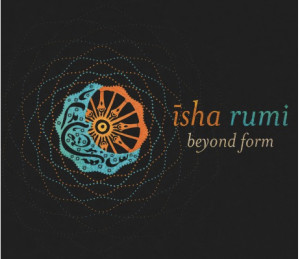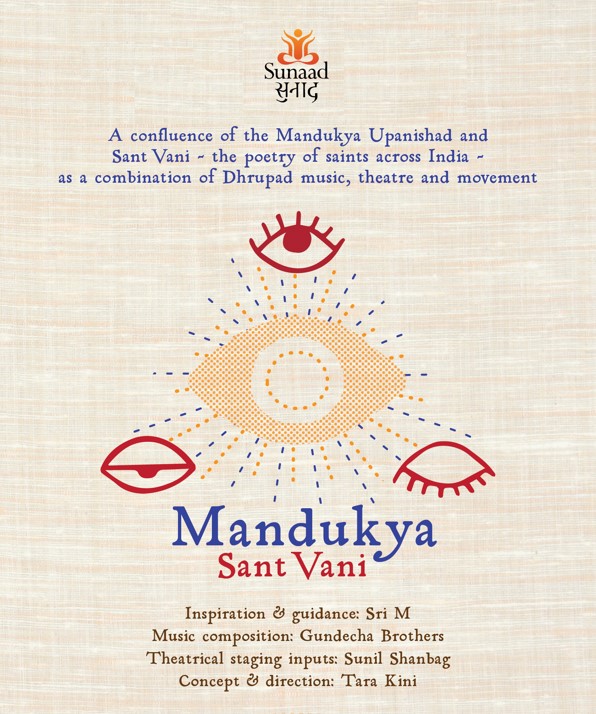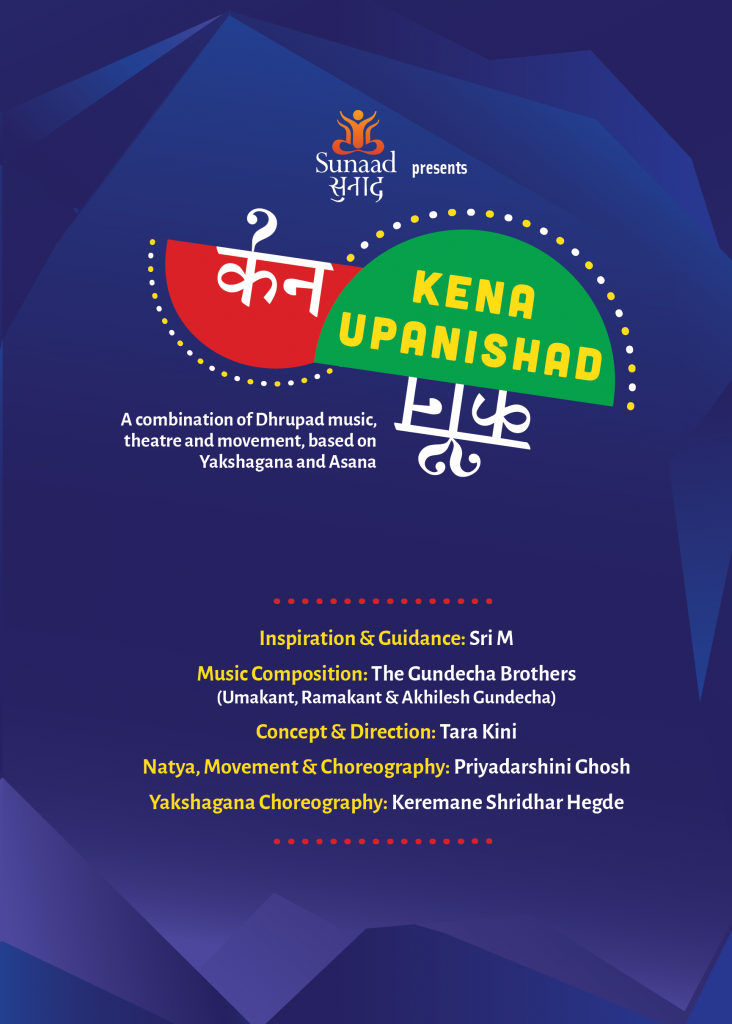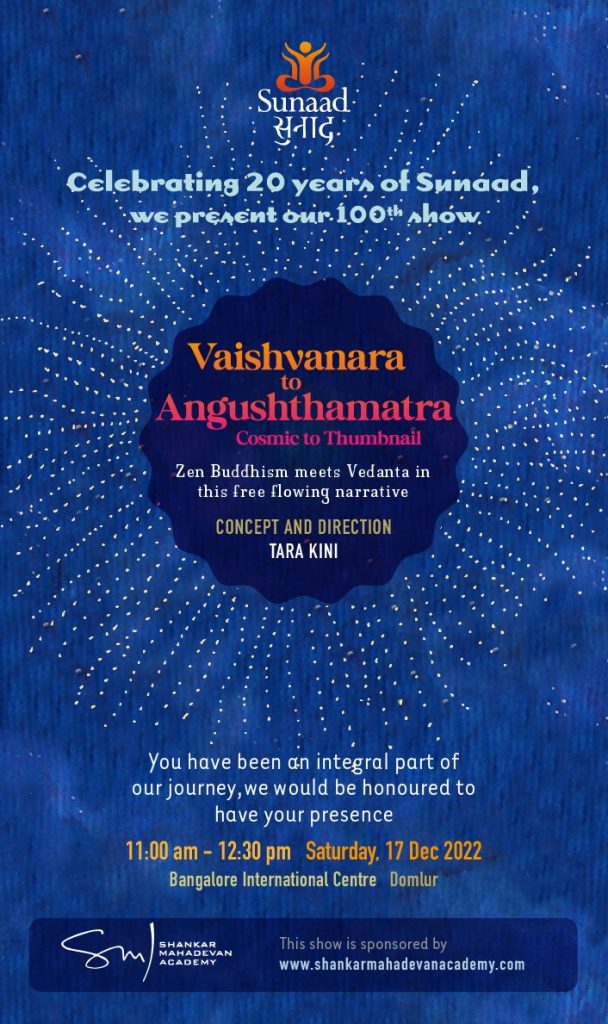Bhava Yatra
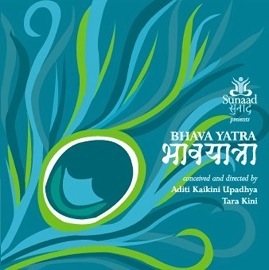
Bhava Yatra
Bhava Yatra is an inspiring journey into the depths of emotions, feelings and divinity through Hindustani Classical music, where melody, rhythm and song blend with the traditional art of storytelling.
The core idea for Bhava Yatra is a shloka from the Bhagavad Gita in which Lord Krishna says that He will fulfill us in whichever way we seek Him. With this simple spiritual insight, Bhava Yatra journeys through three emotions or rasas; three shades of love – vatsalya (parental love), sakhya (friendship) and madhurya (romance). In this journey of exploration, we ride the waves of emotion through music and our chosen motif – Krishna.
Narration by a sutradhaar ties together this rendition of classical compositions including Dhrupad, Dhamar, Khayal, Thumri and Bhajan. Of the 12 compositions, 9 are by the renowned late Pt. Dinkar Kaikini.
Raag Katha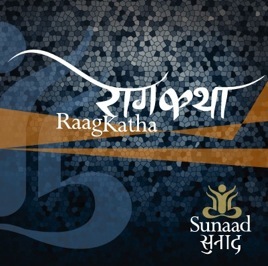 Raag Katha tells the story of the founding concept of Indian classical music – the Raag. This story traces the journey of the Raag from its origins in Vedic chanting to its contemporary manifestations in Bollywood film songs. Weaving together song with story-telling, Raag Katha present glimpses and insights into the origin and evolution of India’s many musical styles.
Raag Katha tells the story of the founding concept of Indian classical music – the Raag. This story traces the journey of the Raag from its origins in Vedic chanting to its contemporary manifestations in Bollywood film songs. Weaving together song with story-telling, Raag Katha present glimpses and insights into the origin and evolution of India’s many musical styles.
The Raag has flowed into a myriad tributaries; it has multiplied into a many-splendoured thing and resonated today not only in Dhrupad, Dhamaar, Khayal and Thumri but also in Dadra, Kajri, Tappa, Ghazal, Bhajan, Pop, fusion music and Bollywood film songs. However, the core and the essential spirit of the Raag is unchanged. This unbroken line, this Sutra, this thread of continuity that traverses two thousand five hundred years, in this lies the story of our Raag. This is our Raag Katha.
Pratha
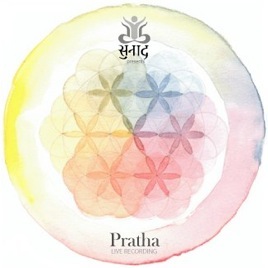 “Pratha” highlights three musical genres – Dhrupad, Khayal and Tarana, each of which is presented through a unique tradition.
“Pratha” highlights three musical genres – Dhrupad, Khayal and Tarana, each of which is presented through a unique tradition.
Dhrupad is presented through the Dagar bani, the wondrous lineage of the Dagars, gurus to the Gundecha brothers. We had the good fortune to learn these Dhrupad compositions from the Gundecha Bandhu when we visited their Gurukul in Bhopal.
The soulful Khayal compositions of Pt. Dinkar Kaikini of the Agra Gharana have been received in Sunaad through his daughter and disciple Aditi Upadhya, a founder teacher of Sunaad.
Lalit J. Rao, taught us the Taranas that she received from her guru, Ustad Khadim Hussain Khan of the Agra Gharana.
Raag Sarita
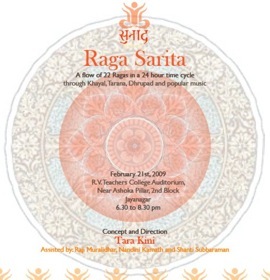 Raga Sarita is based on a Raga Samay Chakra Malika, which is a bandhish comprising 22 Ragas. Composed by Smt. Kumudini Katdare, disciple of Mogubai Khurdikar and Kamal Tambe, this bandhish represents Ragas as they are arranged in sequence according to the time of day. This placement subscribes to the theory in Hindustani classical music that each Raga is most appropriately sung at a specific time in the 24 hours of a day. Each line of the composition is set to a cycle of 16 beats, contains lyrics that describe a Raga and represents the typical movement of that Raga.
Raga Sarita is based on a Raga Samay Chakra Malika, which is a bandhish comprising 22 Ragas. Composed by Smt. Kumudini Katdare, disciple of Mogubai Khurdikar and Kamal Tambe, this bandhish represents Ragas as they are arranged in sequence according to the time of day. This placement subscribes to the theory in Hindustani classical music that each Raga is most appropriately sung at a specific time in the 24 hours of a day. Each line of the composition is set to a cycle of 16 beats, contains lyrics that describe a Raga and represents the typical movement of that Raga.
Leading with the names of 22 Ragas, one in each line of the composition, we will present a Khayal, Tarana, Dhrupad, Varnam or Keertanam in each Raga, followed by a film song in Hindi, Tamil or Kannada that you must have heard somewhere, some time, but not quite realised that it was set in Raga Hamir or Shuddha Sarang!
Swar Katha Upanishad
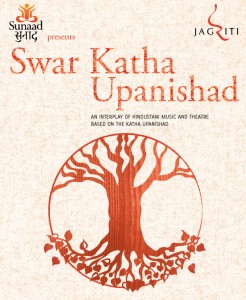
The Katha’s timeless tale is a dialogue between Yama the god of Death, and Nachiketa, a committed teenager seeking the truth. This dialogue between the ‘ideal teacher’ and the ‘ideal student’ has deep and yet immediately meaningful lessons for all of us, in our everyday lives.
Dhrupad, one of the oldest traditions within Hindustani classical music, stresses on the purity of the note – swara – to showcase the pristine beauty of our ragas.
This show makes the philosophy of the Katha Upanishad and Dhrupad music accessible to contemporary audiences.
Isha Rumi Beyond Form
“Let go and rejoice! Whose wealth is it anyway?” Isha Rumi Beyond Form is a theatrical juxtaposition of the Ishavasya Upanishad and the Masnavi of Jalaluddin Rumi, sung in the Dhrupad style of music.
How do we evolve, living in our present everyday lives immersed in sensory experiences, to that other dimension of being which is beyond the material and holds the promise of everlasting joy?
“So’ham asmi”…”He am I”…”Anal haq”…”I am Truth” marks the end of an individual’s journey to the egolessness of surrender.
Mandukya Upanishad
The presentation is a confluence of Mandukya Upanishad and Sant Vani – the poetry of saints across India. Mandukya Upanishad, that comes at the end of the Atharva Veda, is composed of 12 verses that offer a direct approach to the divinity that lies within each of us.
Taking from everyday experiences, this Upanishad reveals the core of consciousness which is our very essence. Saints across centuries, from all over India, have made an intimate discovery of this divinity that lies within. They poured their lived experiences into poetry in the language of the people. This poetry, in ten different languages, as well as the 12 shlokas of the Mandukya Upanishad in Sanskrit, are sung in Dhrupad, the most ancient form of classical music, in 16 Ragas and 9 Talas.
Kena Upanishad
“Kena,” the first word of the Upanishad means – By whom.
In the first chapter, the student asks his Guru, “By whom is this world created? Who powers our minds, senses and bodies, our very first breath?” The Guru explains that the senses and the mind cannot reach this Ultimate Reality, called the Brahman, because although the senses and the mind work due to it, it is beyond them.
In the second chapter, the Upanishad cautions that the realisation of the Brahman is to be achieved here and now, so that we may experience the truth before this body falls away.
The third chapter encapsulates all this in the form of a story of the Devas and the Asuras (gods and demons). Finally, the fourth chapter shows the way to a seeker who wishes to experience Brahman, the Ultimate Reality.
This presentation attempts to bring the essence of the Kenopanishad into our lives. Starting with the story of the victory of the Devas over the Asuras, we have used the life of a musician as a metaphor, to draw a parallel story.
Vaishvanara to Angushthamatra
This program specially created for Sunaad’s milestone of 20 years and 100th show, combines excerpts from the book Alive Until You’re Dead by Susan Moon and Excerpts from the Upanishads and Kabir. Zen Buddhism meets Vedanta in this free flowing narrative.

